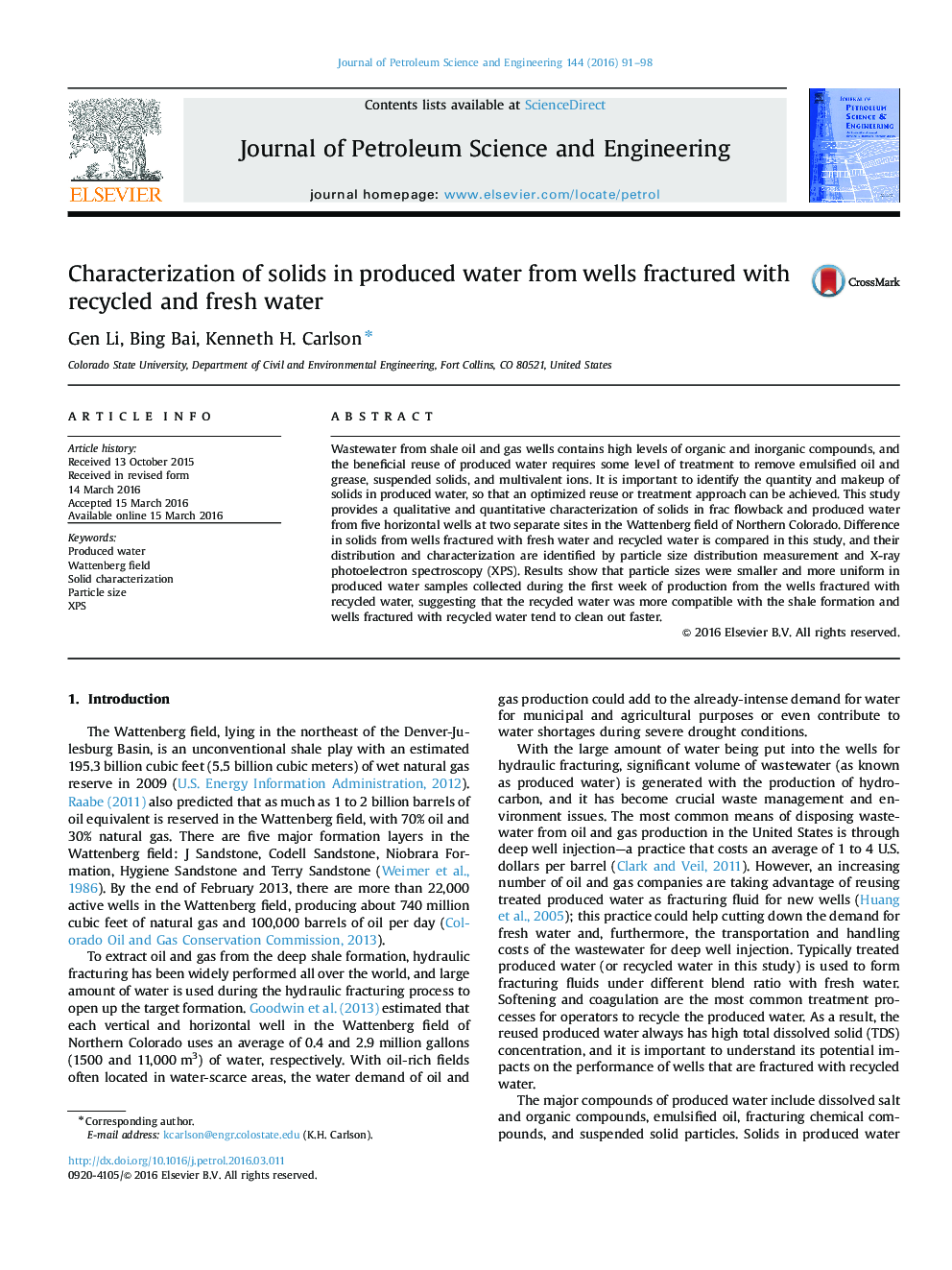| Article ID | Journal | Published Year | Pages | File Type |
|---|---|---|---|---|
| 1754536 | Journal of Petroleum Science and Engineering | 2016 | 8 Pages |
•Understanding the size and composition of suspended solids in produced water.•Difference in solids from wells fractured with fresh and recycled water was compared.•Results indicate that wells fractured with recycled water tend to clean out faster.
Wastewater from shale oil and gas wells contains high levels of organic and inorganic compounds, and the beneficial reuse of produced water requires some level of treatment to remove emulsified oil and grease, suspended solids, and multivalent ions. It is important to identify the quantity and makeup of solids in produced water, so that an optimized reuse or treatment approach can be achieved. This study provides a qualitative and quantitative characterization of solids in frac flowback and produced water from five horizontal wells at two separate sites in the Wattenberg field of Northern Colorado. Difference in solids from wells fractured with fresh water and recycled water is compared in this study, and their distribution and characterization are identified by particle size distribution measurement and X-ray photoelectron spectroscopy (XPS). Results show that particle sizes were smaller and more uniform in produced water samples collected during the first week of production from the wells fractured with recycled water, suggesting that the recycled water was more compatible with the shale formation and wells fractured with recycled water tend to clean out faster.
